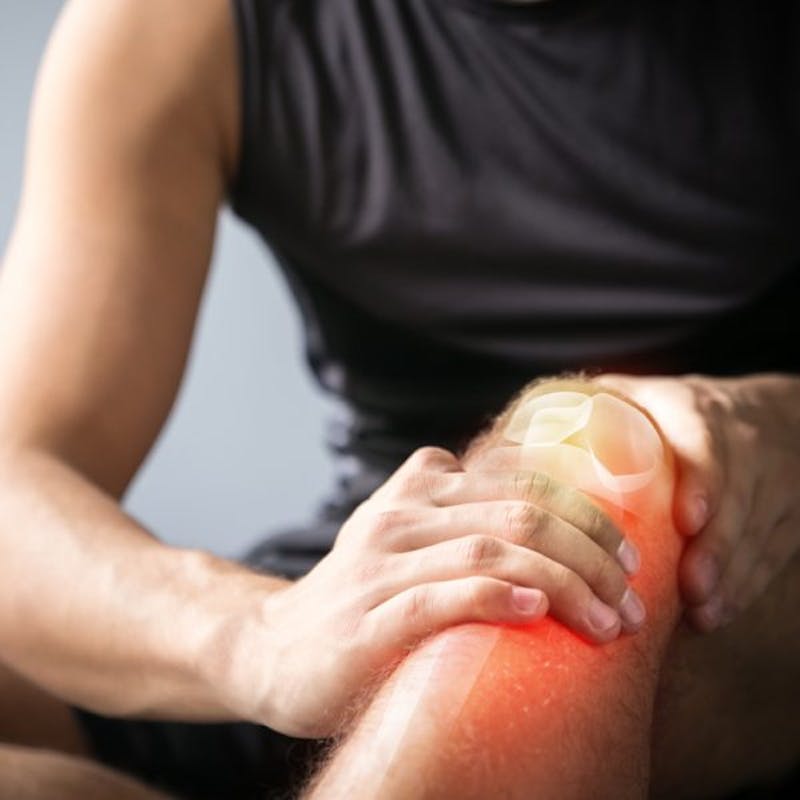
Schedule A Consultation
healing your body for the long run
Contact Us
Your knees take a lot of wear and tear each and every day. The majority of a person’s bodyweight is forced directly into the knee joints, so they experience compression forces often and can deteriorate quickly. There are a variety of common knee injuries, including arthritis, knee tendonitis, and ligament tears and strains.
Healing these injuries can take time and may involve surgery. However, regenerative medicine, especially platelet rich plasma, or PRP, treatments can help to speed up the healing process, prevent pain with various movements, and get you back to the activities you love.
Knee injuries can occur for many different reasons, and one of the most common is from sports. These injuries can include strains or tears of the anterior cruciate ligament (ACL), posterior cruciate ligament (PCL), medial collateral ligament (MCL), or lateral collateral ligament (LCL). All of these ligaments provide stability for the knee, and they can be damaged by abnormal bending, which is common in sports such as basketball, soccer, and football.
In addition to ligament damage, tendon damage can also occur. The most common site of injury is the patellar tendon, which connects the kneecap to the shinbone. Damage to this area is known as knee tendonitis or knee tendinopathy. If this tendon becomes stressed and overused, which is commonly seen with repeated jumping and landing, long-distance running, and kicking motions, it can become irritated and cause pain with these movements.
Cartilage damage is also quite common. One of the most common cartilage problems is osteoarthritis. This disease occurs when the articular cartilage, which is found on the lower end of the femur, wears down, causing the bone to rub directly on the meniscus and tibia. This can cause severe discomfort and can make it more difficult to move the knee as well. Arthritis affects a large number of people, and it is increasingly common with age.
Cartilage damage can also occur with the meniscus. The meniscus is made up of two parts: the lateral meniscus and the medial meniscus. Each of these is a C-shaped piece of thick cartilage that works to provide cushioning in the knee joint. These can wear down over time and develop tears, which can cause pain with many knee movements.
PRP therapy utilizes plasma that is extracted from a person’s own blood. A sample of blood is drawn from a patient, and it is centrifuged to separate the contents. This separates blood into red blood cells, and white blood cells, which is called plasma. The plasma is then centrifuged again.
Then, the plasma that is rich is platelets is isolated so that it can be injected into the injury site. This portion of blood plasma has a lot of growth factors in it, which are important for helping tissues to heal and regenerate. The entire process from start to finish takes just about 30 minutes, making it a quick and easy procedure.
There are tons of different growth factors found in the blood, and each one has a different purpose. However, the roles of platelets and growth factors are to prevent new scar tissue from forming, promote the development of new blood vessels, and reduce inflammation levels.
The ability of platelet rich plasma to help speed up the healing process combined with the fact that it can be injected directly into the injury site makes it a great treatment option for a variety of knee problems.
Cartilage, tendons, and ligaments all do not have much vascularity, meaning that they do not have a lot of blood supply. Blood is needed to promote tissue healing, so these tissues generally heal quite slowly after an injury. Injecting plasma directly into the damaged tissue is able to stimulate the growth of new blood vessels, which can help to accelerate the healing process.
The benefits of this treatment have been looked at by many studies for a variety of different knee injuries. One study looked at the ability of platelet-rich plasma treatments to speed up the healing process of ACL reconstructions. One study noted that patients that received injections showed increased vascularization and improved overall knee stability following the surgery.
Another study looked at the effectiveness of both single and double PRP injections in healing patellar tendinopathy. The majority of patients showed a decreased pain and swelling, increased functionality, and improved joint mobility. Another study also examined tendinopathy treatments and found plasma treatments to be effective at a similar rate.
Many studies have also shown the effectiveness of platelet-rich plasma therapy for treating arthritis and many other knee injuries, demonstrating that this treatment has a huge amount of promise and that it could be very beneficial in the healing of knee issues as well as many other injuries.
http://andreassauerbreymd.com/wp-content/uploads/2…
https://onlinelibrary.wiley.com/doi/abs/10.1002/jcp.21368
https://www.ncbi.nlm.nih.gov/pmc/articles/PMC43384…
https://www.ncbi.nlm.nih.gov/pmc/articles/PMC44960…
https://www.verywellhealth.com/platelet-rich-plasm…